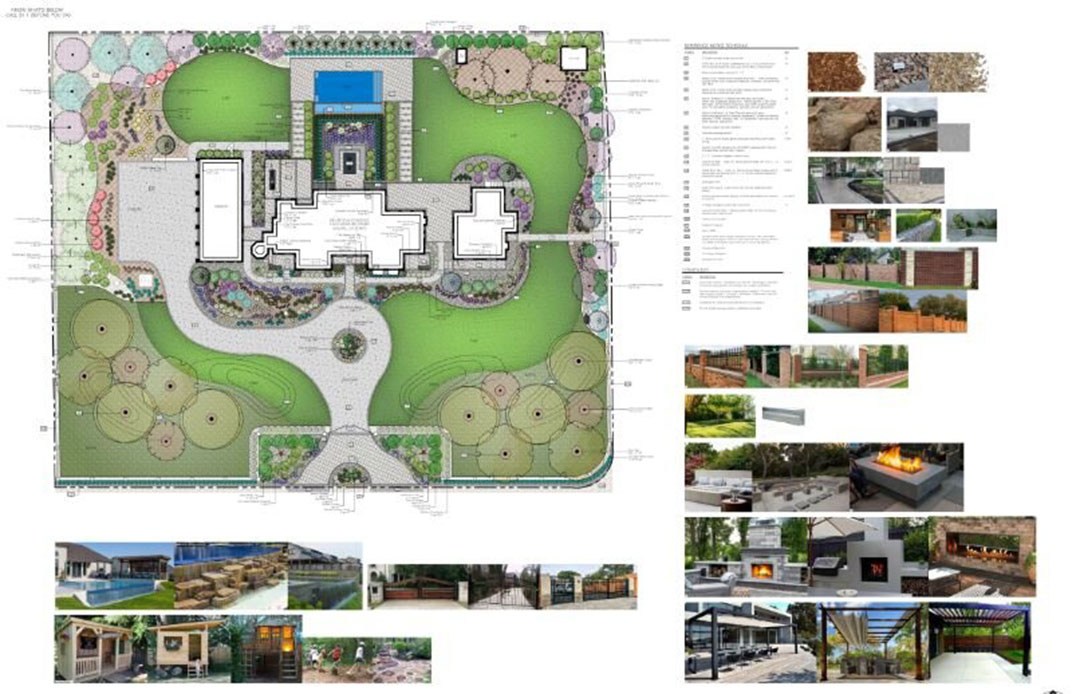Can I design my own yard? Should I hire a designer? What about a landscape architect?
All of these questions can overwhelm you when you’re first trying to figure out what you want to do with your yard. Several key factors will help determine which direction is best for you. The scope of work of your project and your budget will be the biggest influencers for your decision. As with any contractor, at Helios, we recommend you talk to multiple people before deciding who will be the best partner for you.


With all of the resources available on the internet, it can be easy to think you can easily design your own yard. While we’ve definitely some DIY warriors be successful, it is a difficult road for most, and Kristen and I end up meeting with many people who have tried and failed to design/build their own landscape. The most crippling issue most DIYers face is the inability to accurately communicate their vision to a contractor or in some cases, even their spouse! This can lead to lots of arguments, confusion, and frustration as well as lost time and money. One example was when I met a client that was trying to install a patio for her spa. She had done her research on the type of patio she wanted and had numerous Pinterest and Houzz photos consistent with her vision. However, when I came to the site there was a half-constructed patio and the client was very distraught. She had fired her contractor because what he had started to install did not match her vision in shape or form. Eventually, she had to pay to demo the partially constructed patio and start over with the design to achieve the look and function that she wanted from the patio. Definitely, an expensive lesson to learn!

Both designers and architects spend years in school learning drafting skills that enable us to accurately represent both your existing landscape and a new design. The plans we develop serve as a roadmap for both the DIYer and the contractor, greatly reducing any “wiggle room” or interpretation of a design. Many of the contractors that Kristen and I work with will not install a landscape without a plan. It ensures that both the client and the contractor are on the same page as to what work needs to be done.
Another benefit of working with a designer or architect is that you are gaining the knowledge they have of various construction techniques, horticultural practices, and budgeting that no single website will be able to tell you. This means that you’ll be exposed to possibilities you may never have considered on your own. You’ll also be able to make much more informed decisions about the materials to be used in your project, from hardscapes to lighting, plant types, and more.
When interviewing landscape designers and landscape architects you should be aware that yes, they are different! And also that there is a wide range of spectrum of expertise among landscape designers and architects. There are some landscape designers that have gained their plant knowledge through Master Gardener courses and they may have a certificate or an Associates Degree. They definitely fill a niche in our industry, but are usually the most budget-friendly and often offer the lowest level of expertise. Then there are landscape designers that have a Bachelor’s degree from an accredited program. This is the category that Kristen and I fall into! We studied horticulture, drafting, soil science, irrigation, construction techniques, estimating, and many more subjects for four years to gain our expertise. When you pair that with our industry experience we are a formidable force!


The difference most people struggle with is between landscape designers and landscape architects. There is a lot of overlap in our industry as some landscape architects do become design/build contractors and some landscape designers do go on to work for landscape architecture firms. Both can require at least a Bachelor’s degree but some people start in another field and then get a Masters in Landscape Architecture. The tendency is for landscape architects to overlap more with civil engineering and work on larger scale projects (more commercial than residential) and their work includes things such as handicap access, sports fields, and other large-scale projects. Landscape Architects also tend to charge a premium since many of them have master’s degrees. Even among landscape architects, there is a further distinction. A minority of landscape architects undergo the expensive and extensive process of passing state exams for licensure. This allows them to provide stamped drawings for permits. However, on the residential scale of landscape construction, most permits do not require a landscape architect’s stamp. A notable exception would be that the Homeowner’s Association of Rancho Sante Fe in California requires stamped plans from a landscape architect to be submitted for their approval prior to construction. Most communities are not this exclusive. Often a city will review plans and have their own civil engineer stamp them if they approve. Many contractors are well acquainted with this process and can help you jump through the necessary hoops to get your project approved.

In the end, who you decide to work with to help you design your landscape will come down to who you’re most comfortable with.
Your project may be small enough that you can use your green thumb and your favorite garden books to make the best decision for your landscape. Or maybe you just pay to consult with a professional designer rather than hiring someone to do the design for you.
There are many options out there but if you’re in the market, check us out at Helios!





